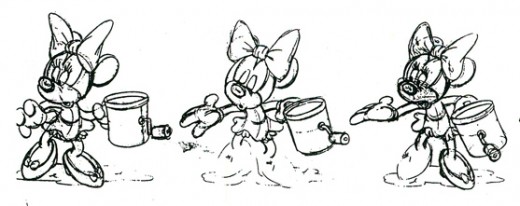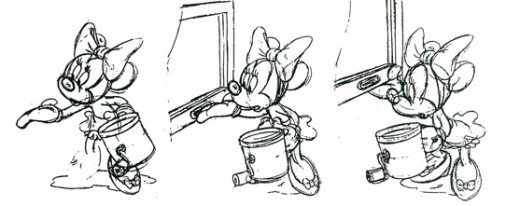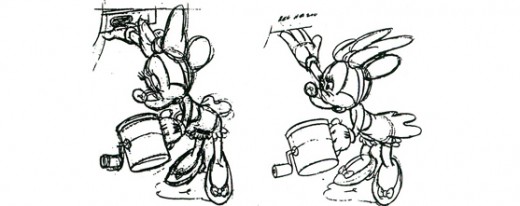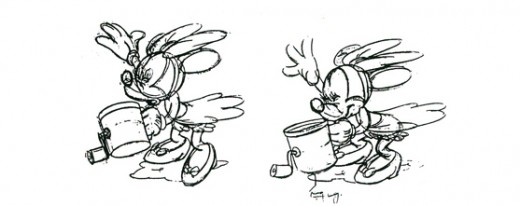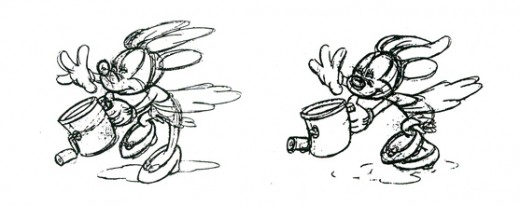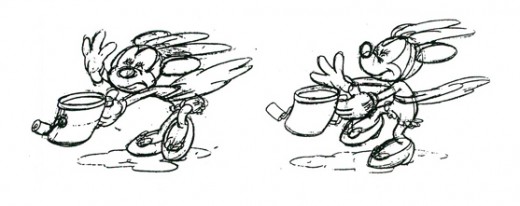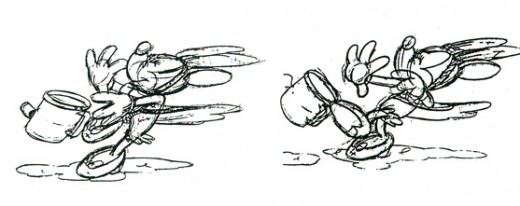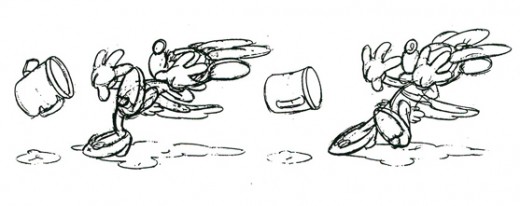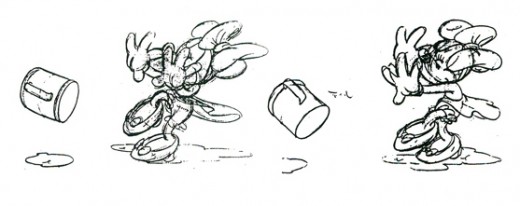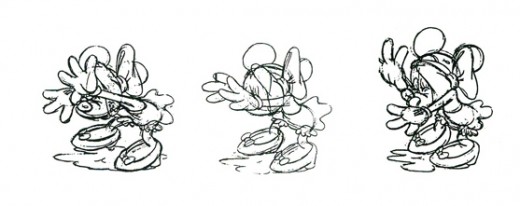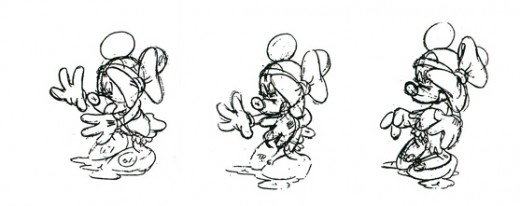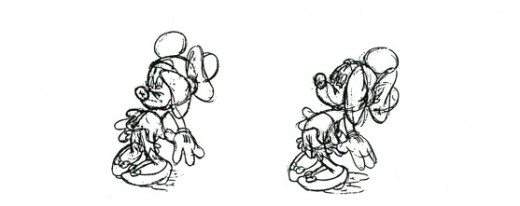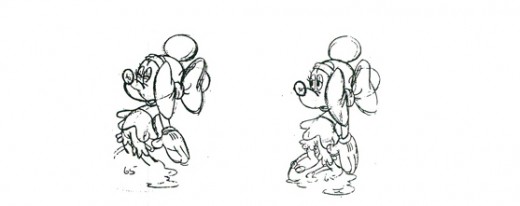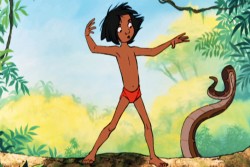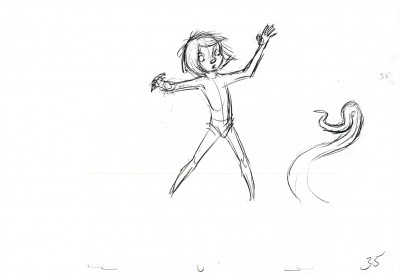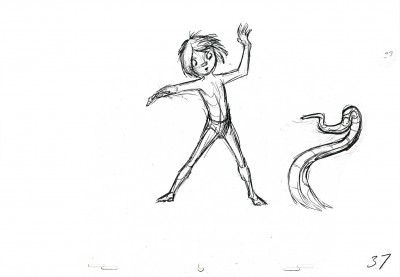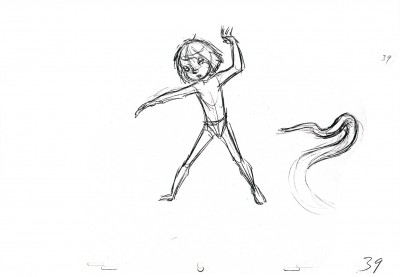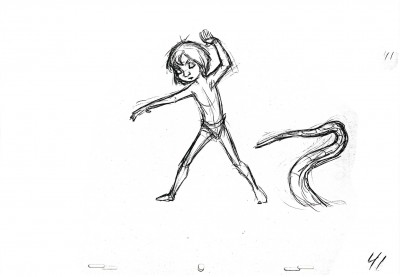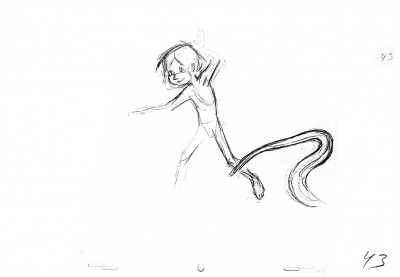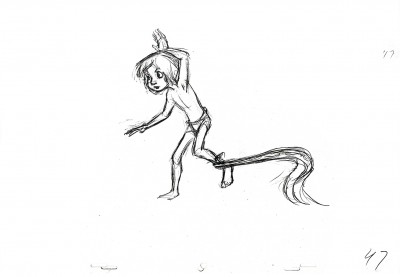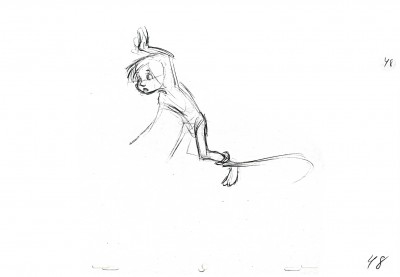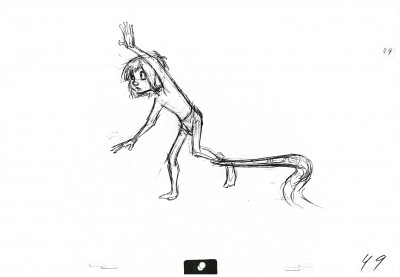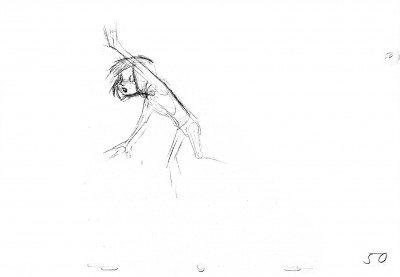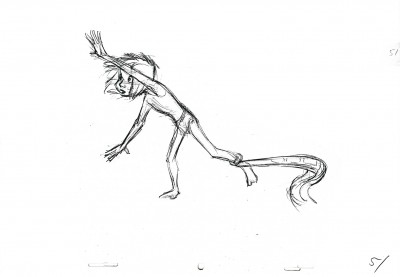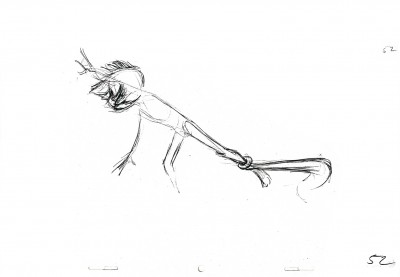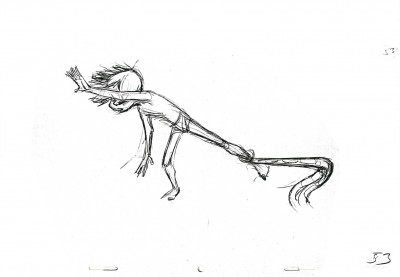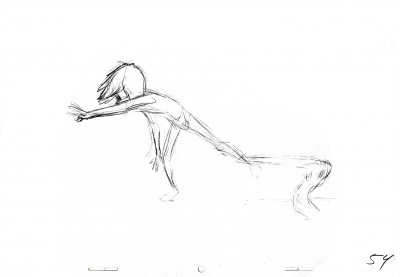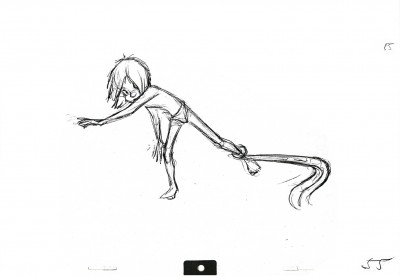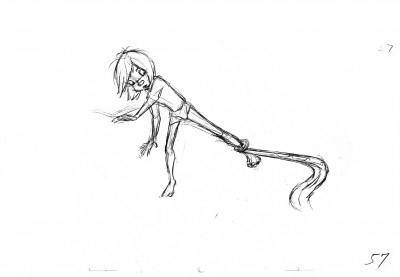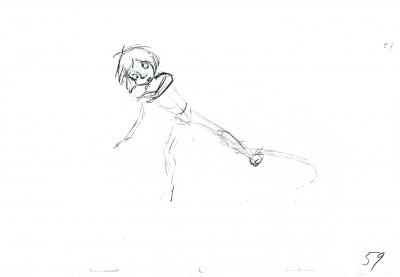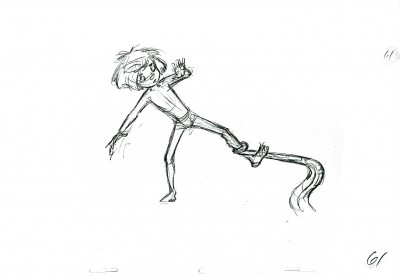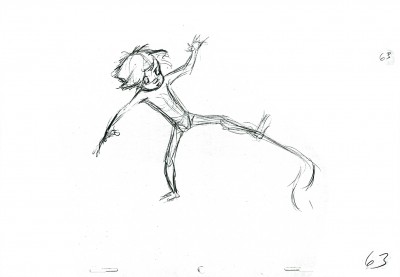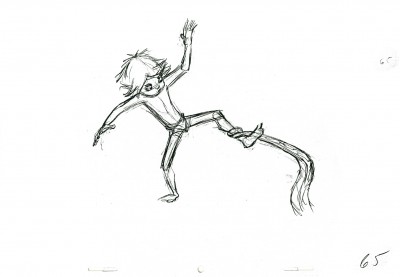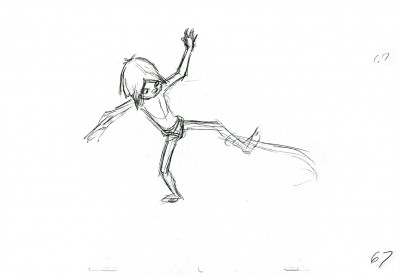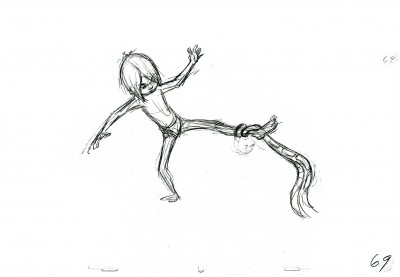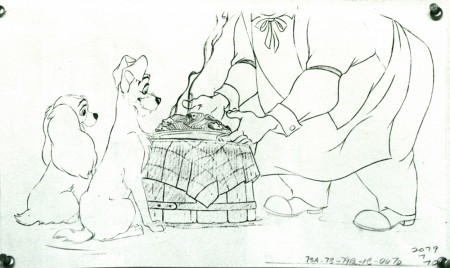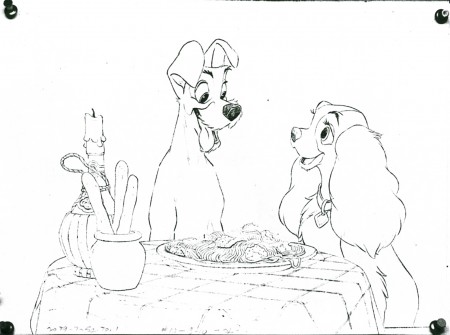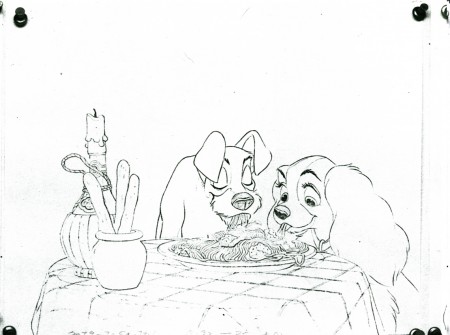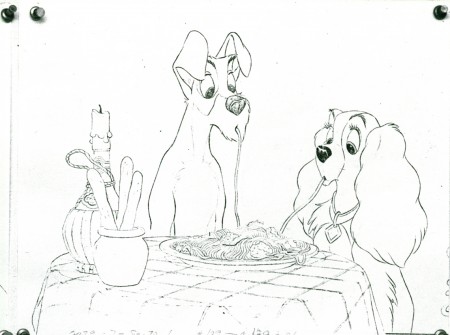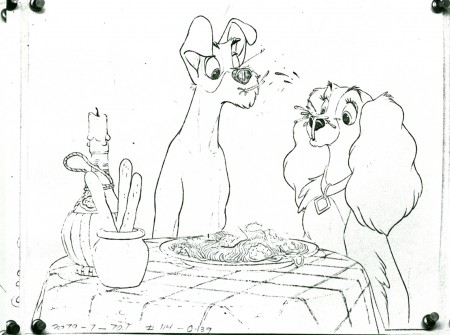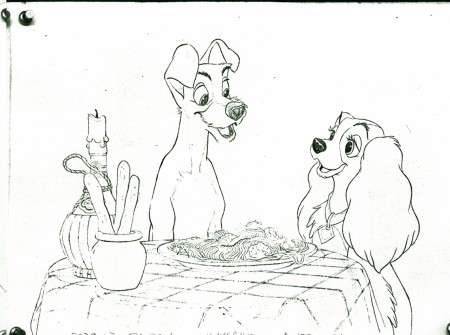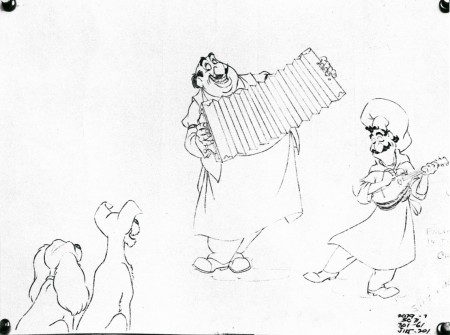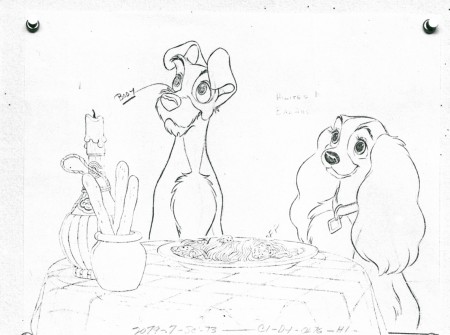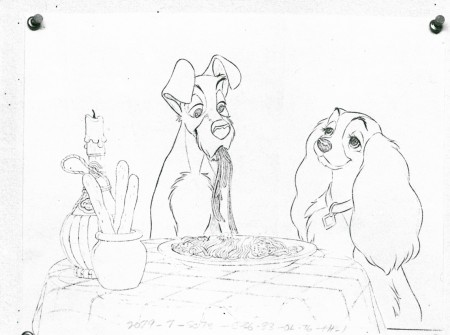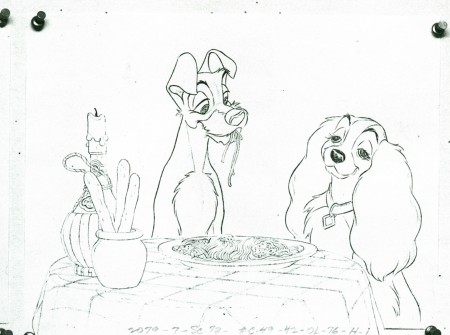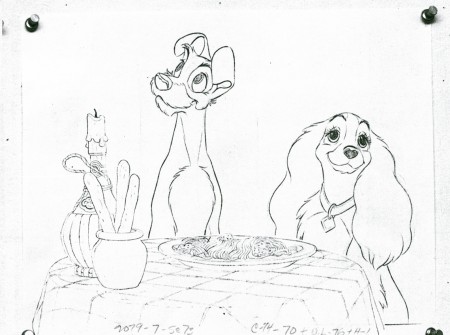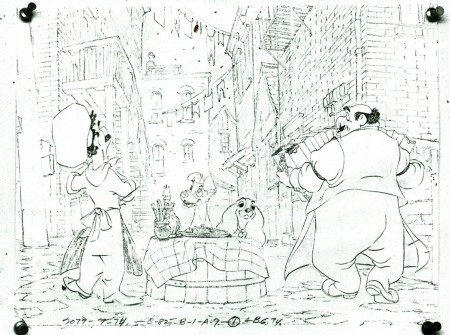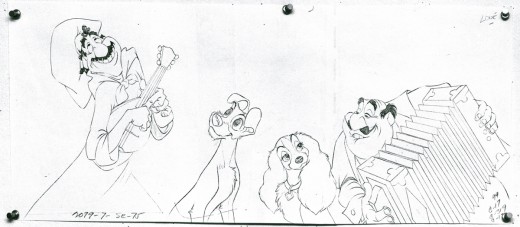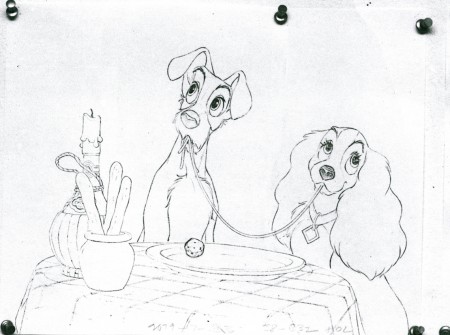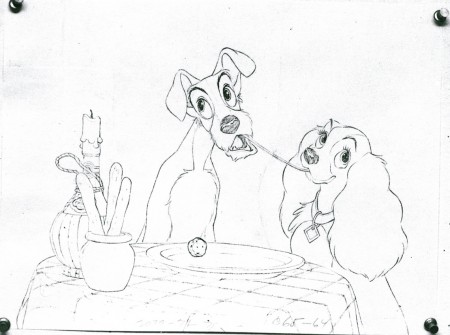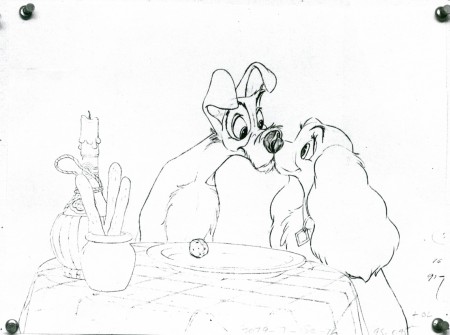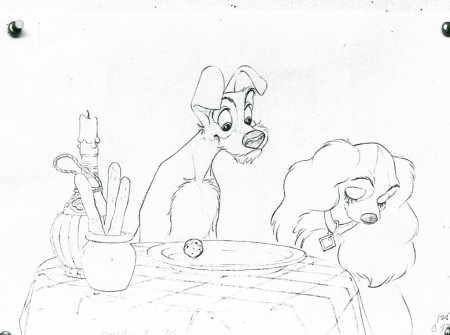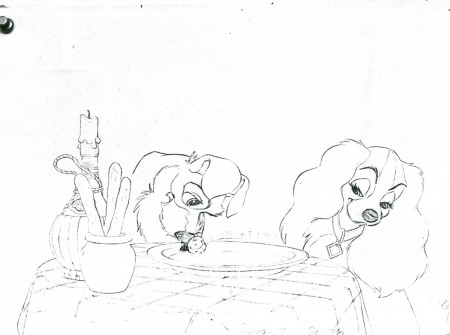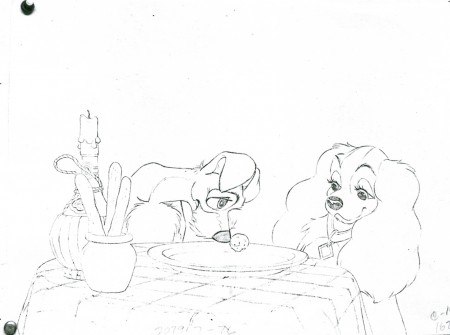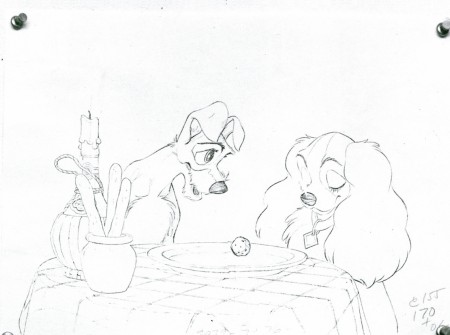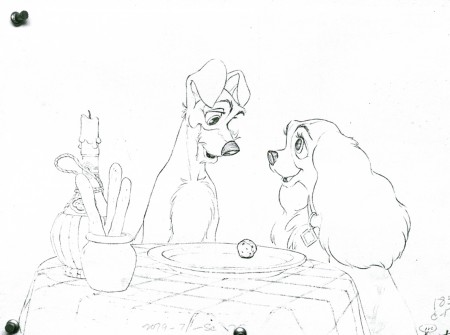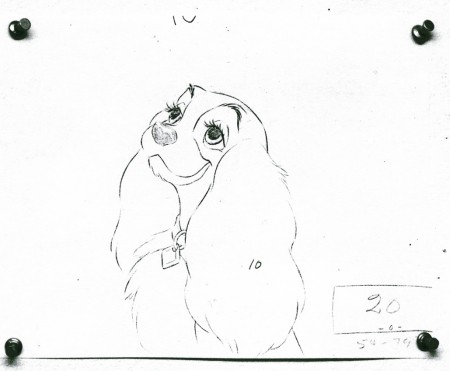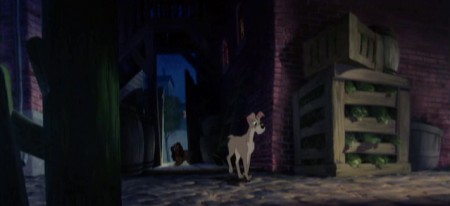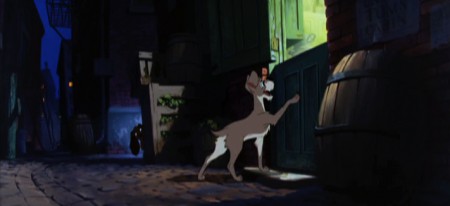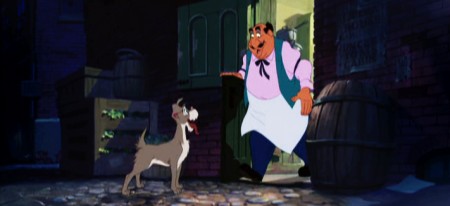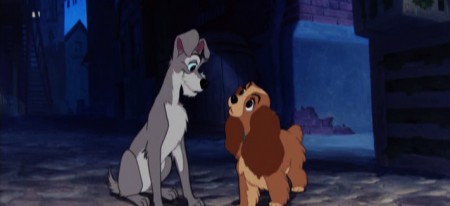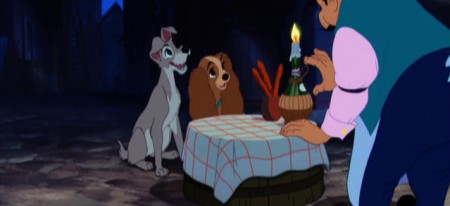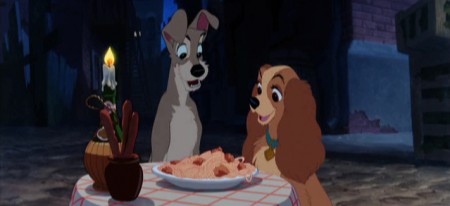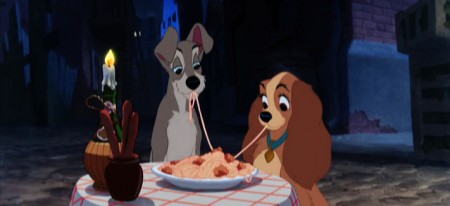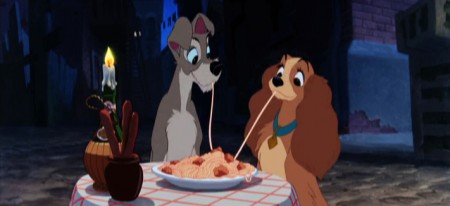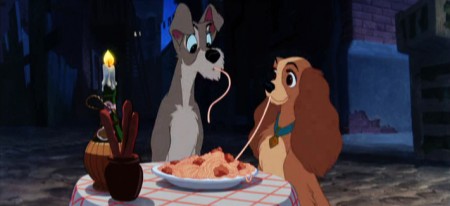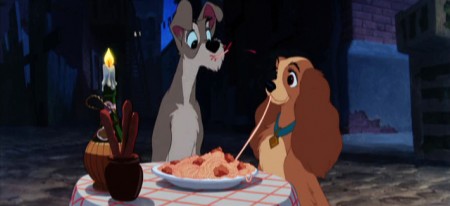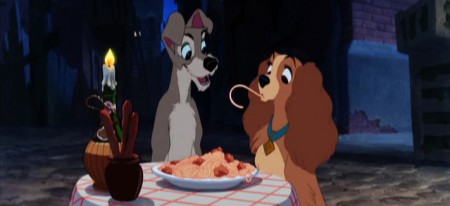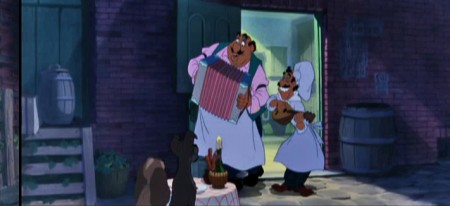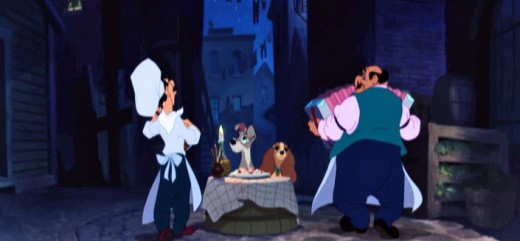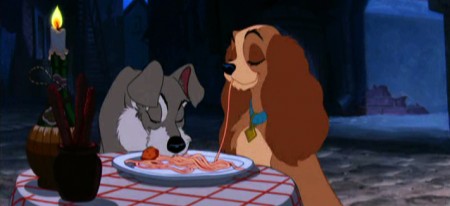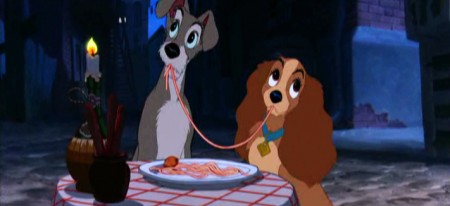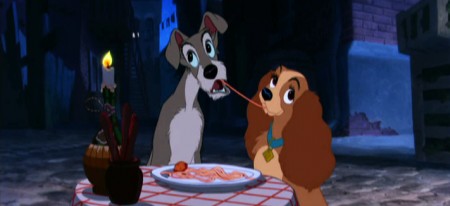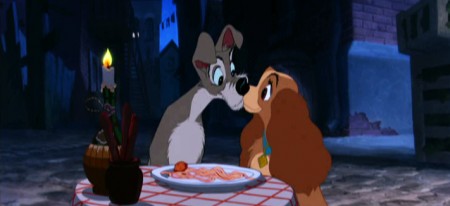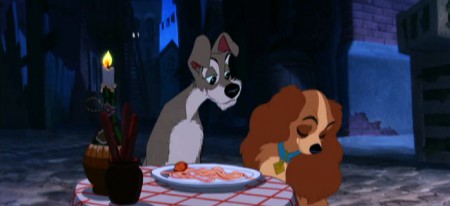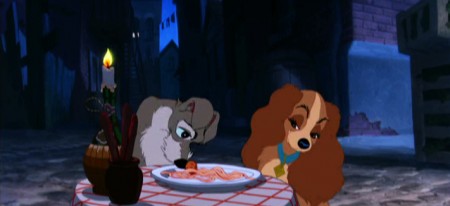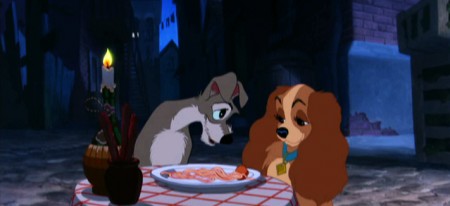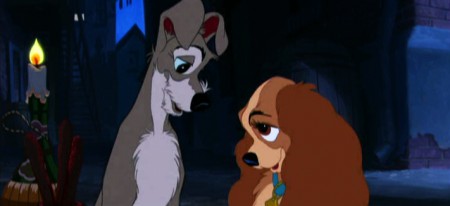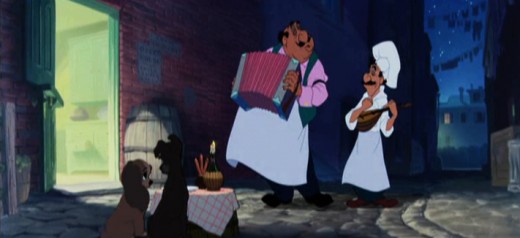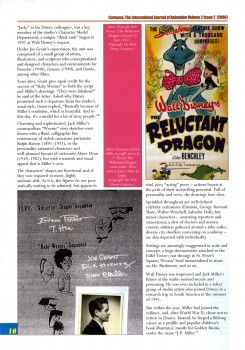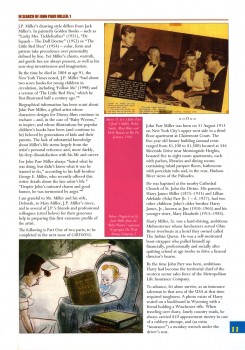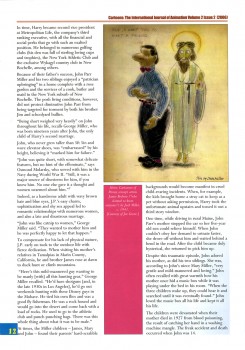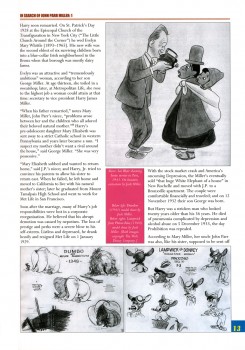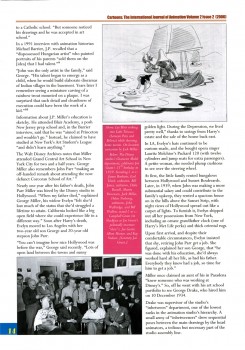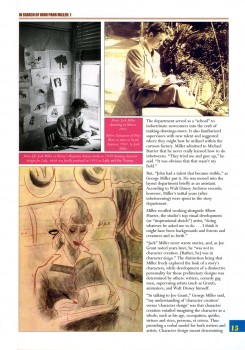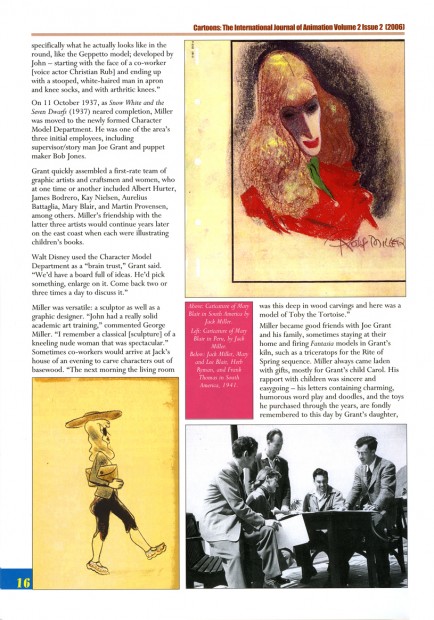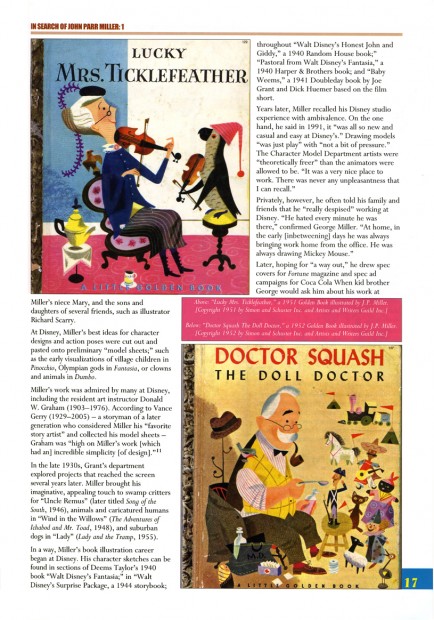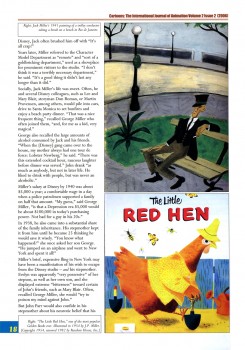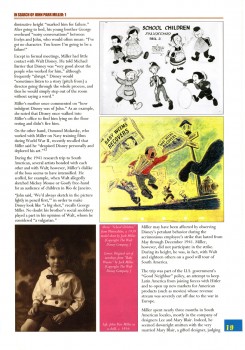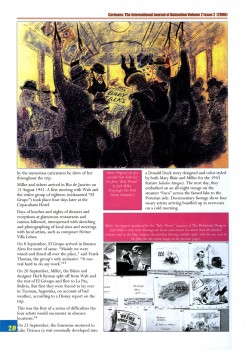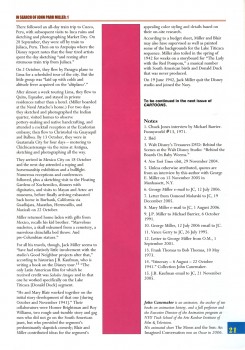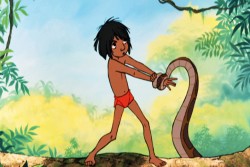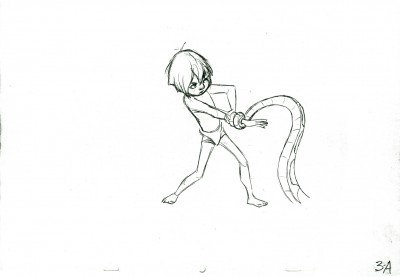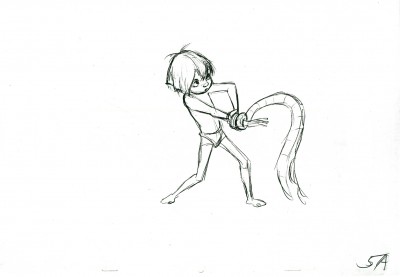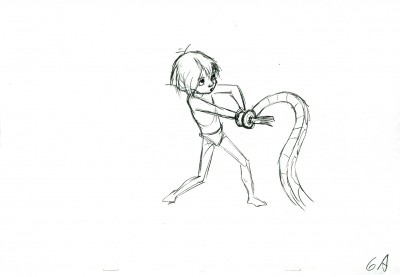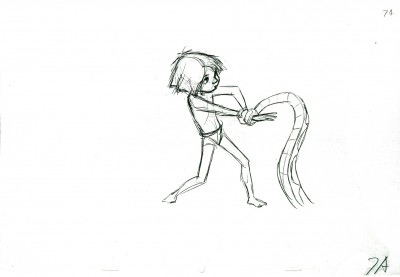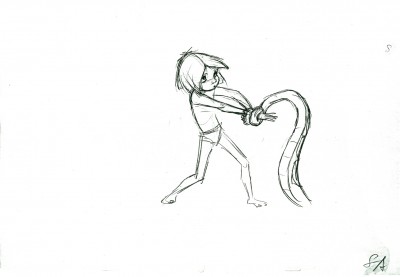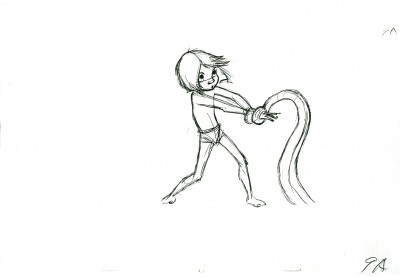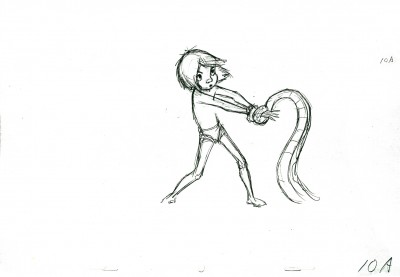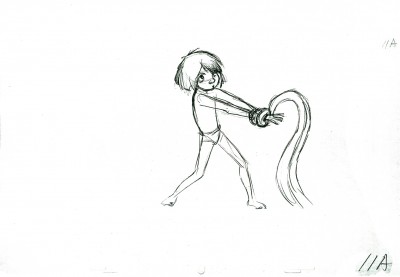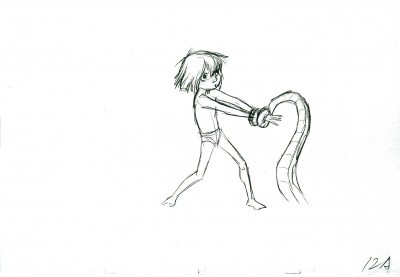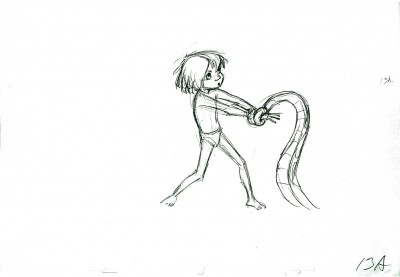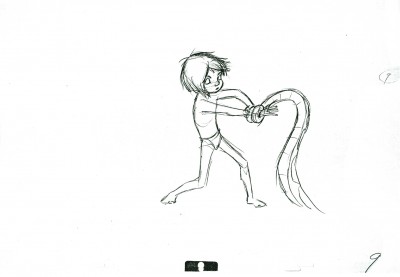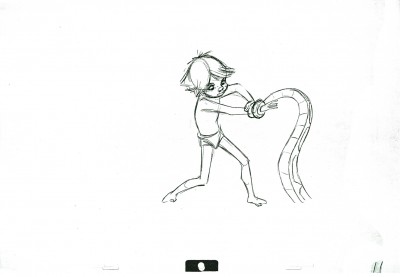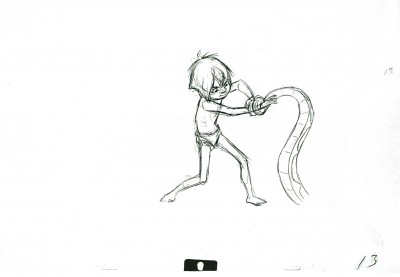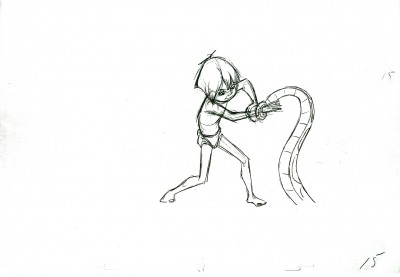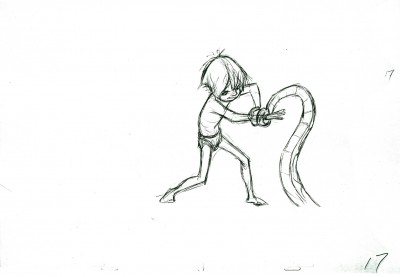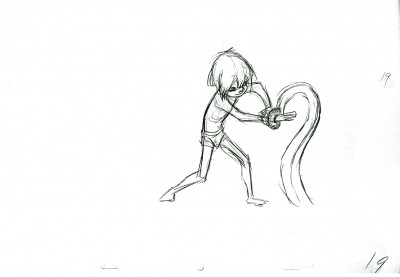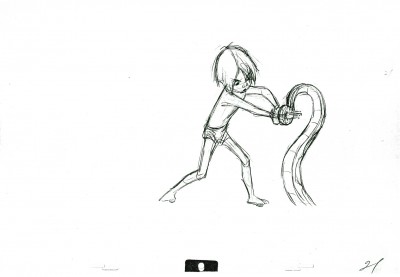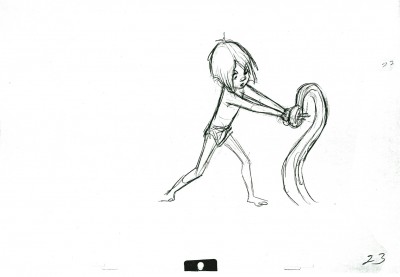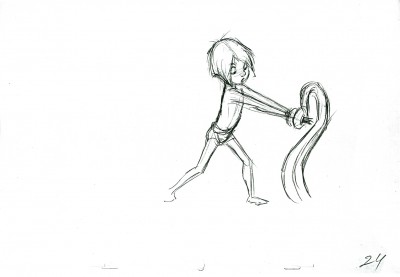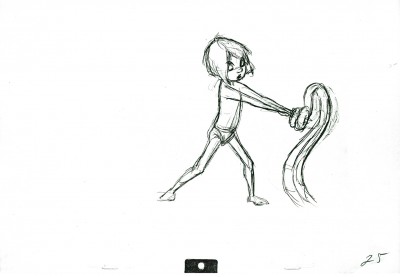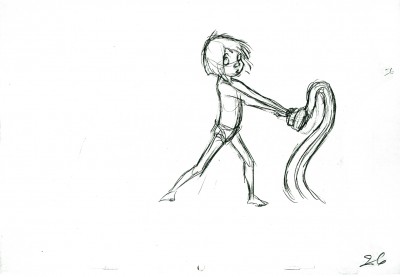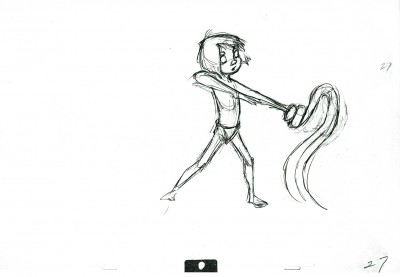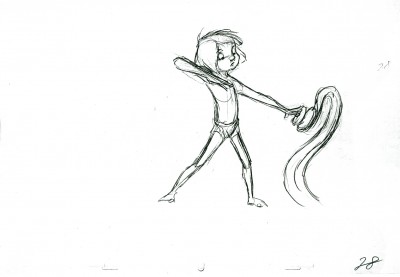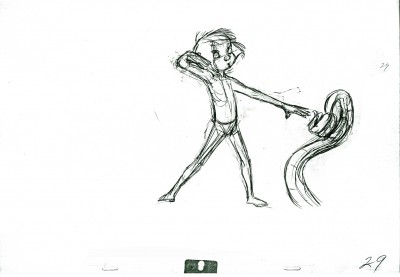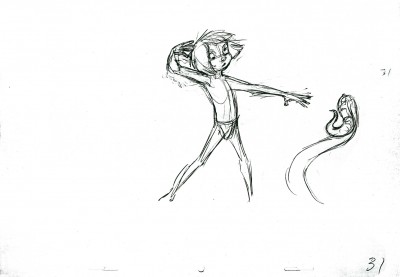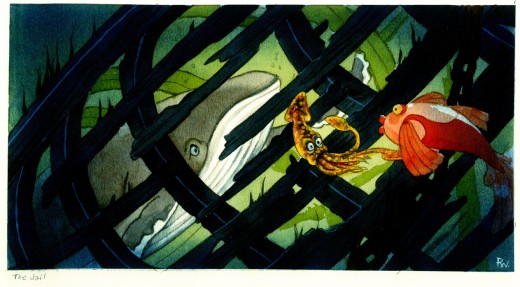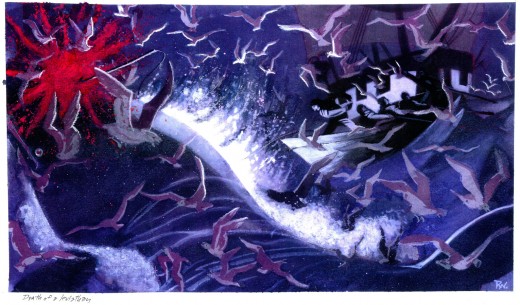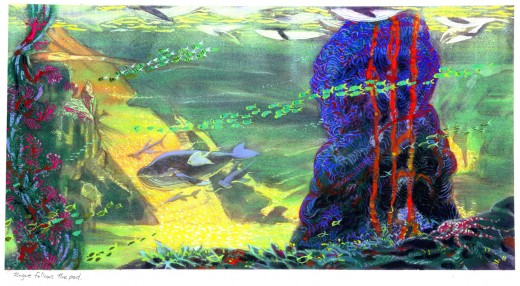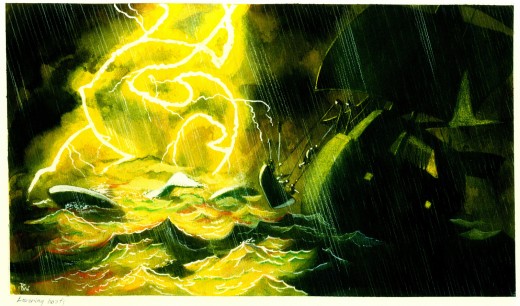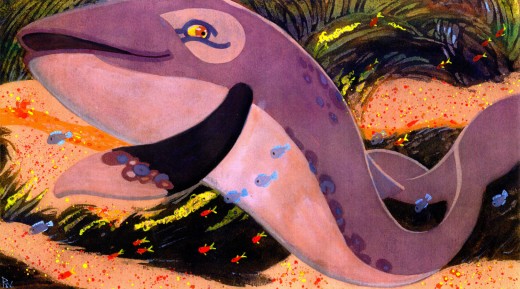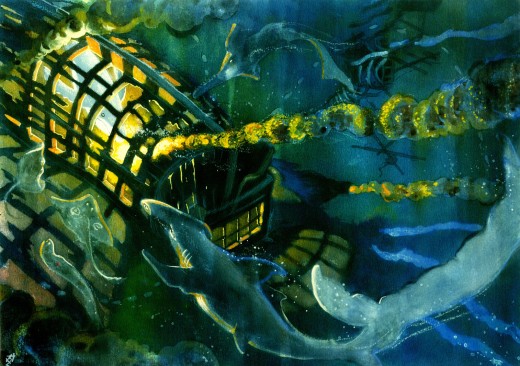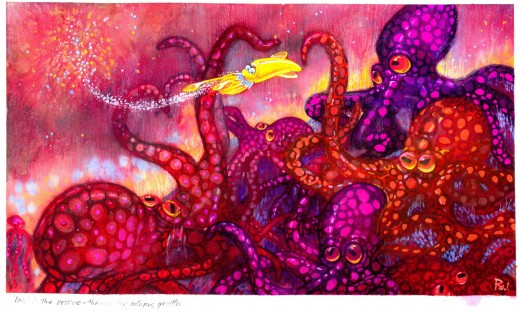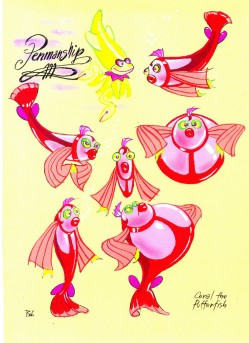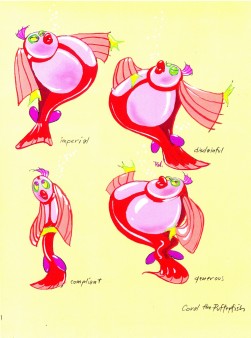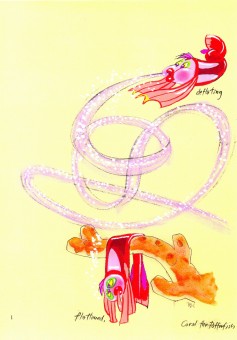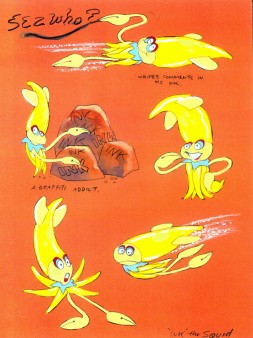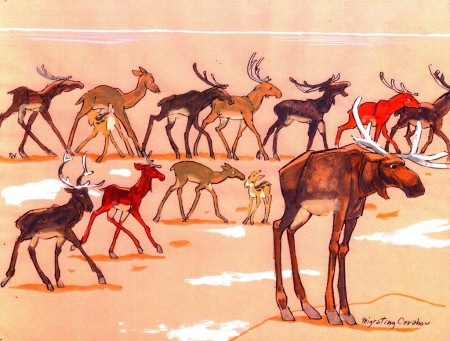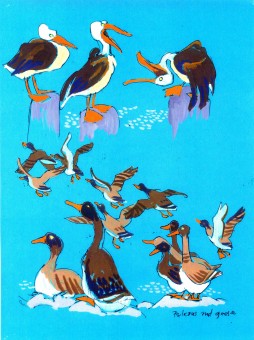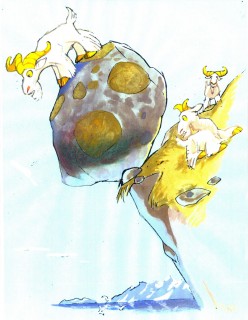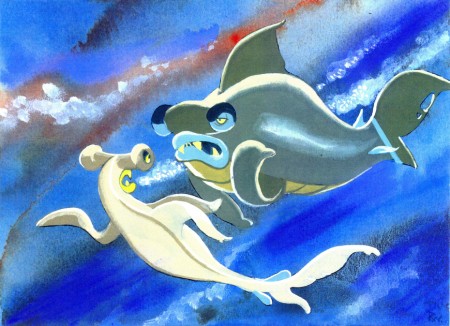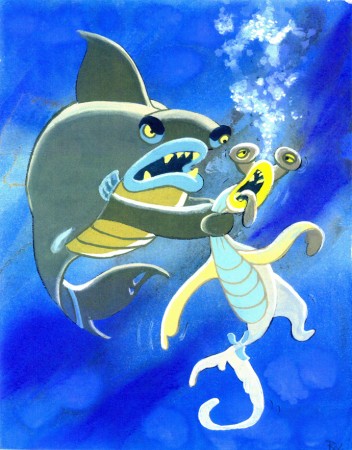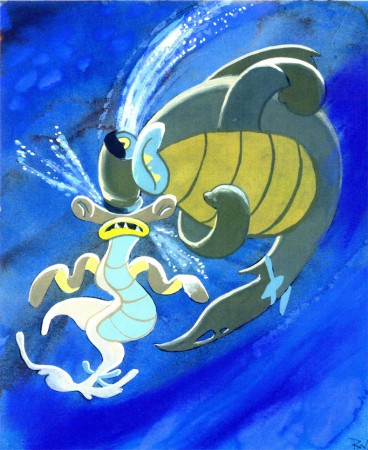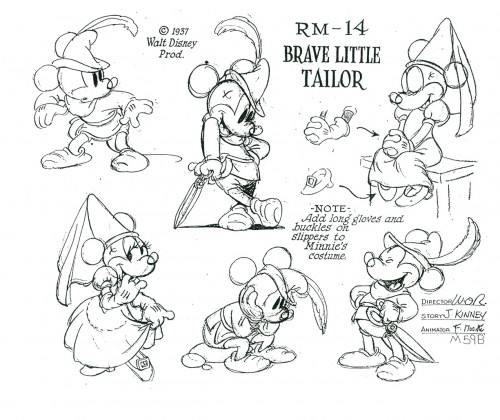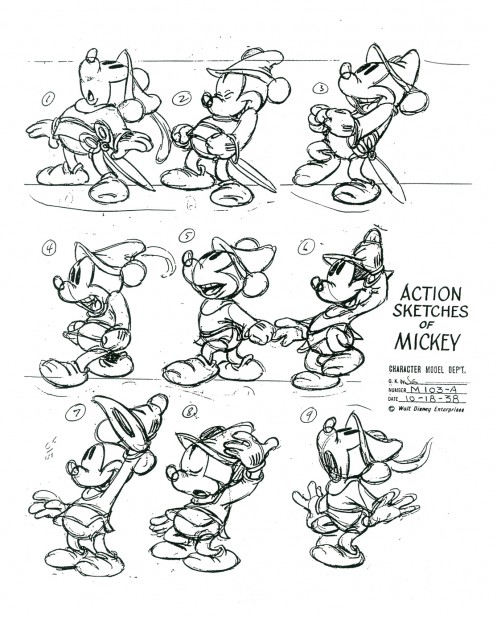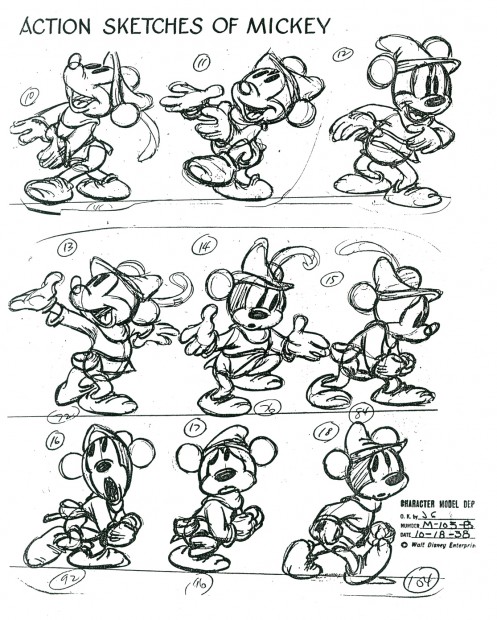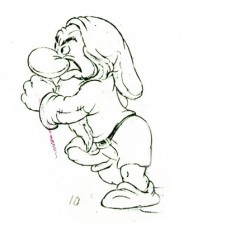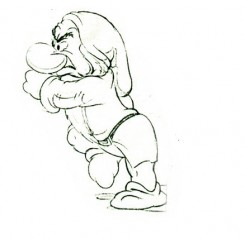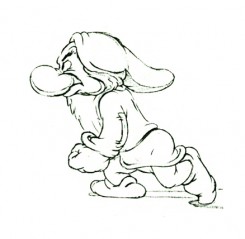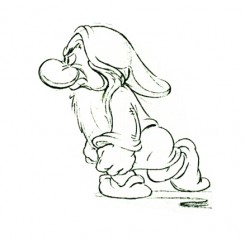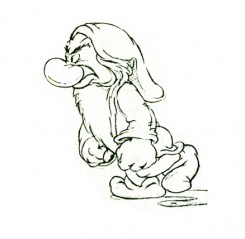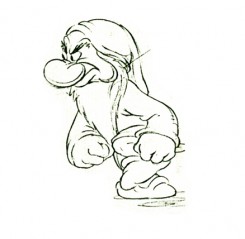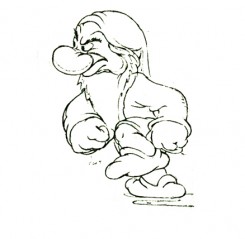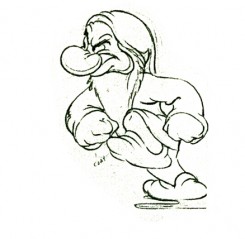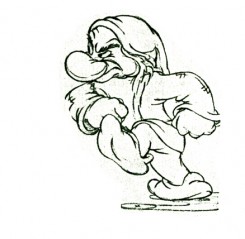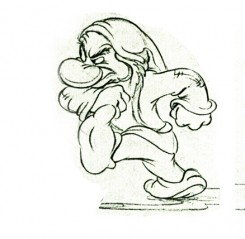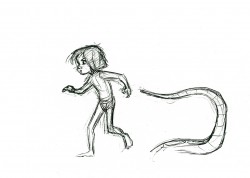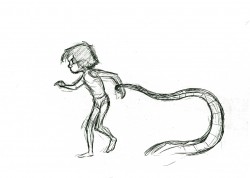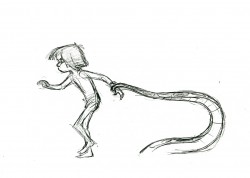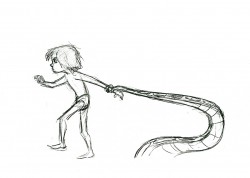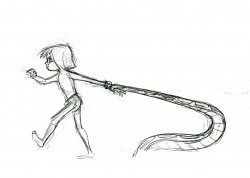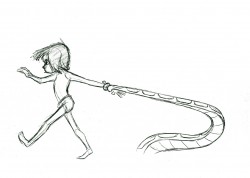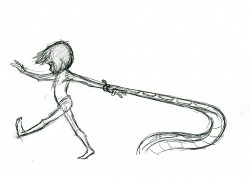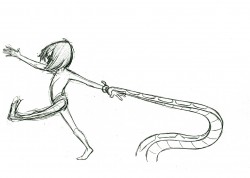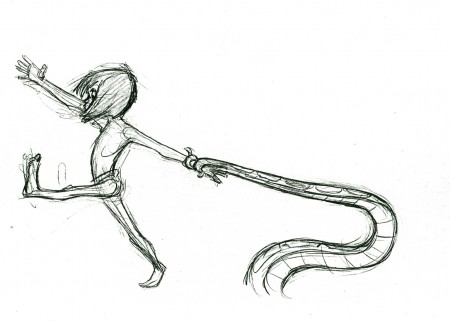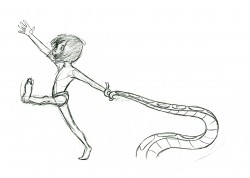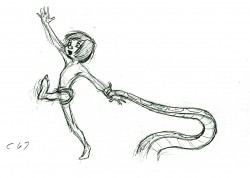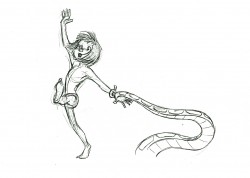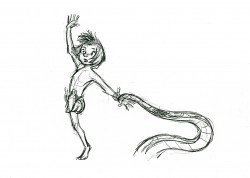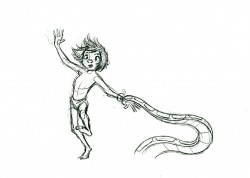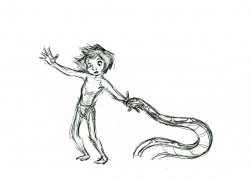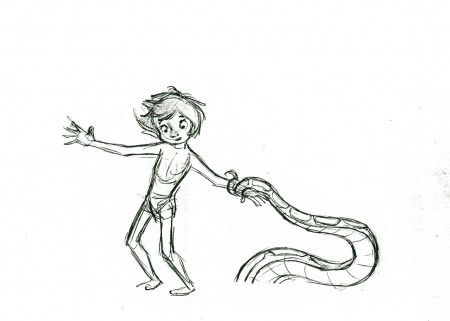Category ArchiveDisney
Animation &Animation Artifacts &Bill Peckmann &Disney 07 Jan 2010 10:04 am
Little Whirlwind Action Chart
- Thanks to the generous loan from Bill Peckmann, I have this animation model chart of Minnie in Sc. 10 from The Little Whirlwind. The animation is by Ken Muse, Les Clark and George deBeeson (Effx). I suspect that Les Clark had the greatest hand in animating Minnie.
Here’s the model chart as copied:
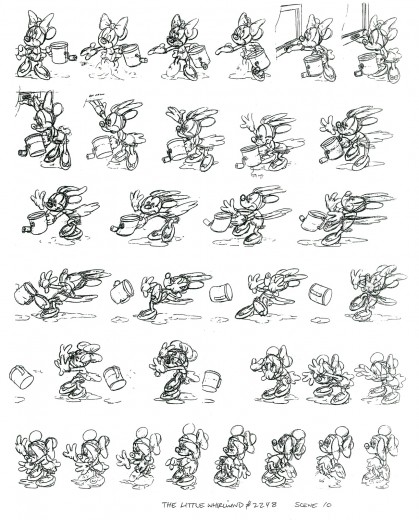
I’ve broken the images down and enlarged them a bit for viewing purposes:
a mix of ones and twos. All guesswork on my part, and
there are probably some drawings left off the model sheet. Click left side of the black bar to play.
Right side to watch single frame.
Animation &Animation Artifacts &Disney 04 Jan 2010 08:42 am
More Thomas Jungle Book – 2
- Last week, I posted the first part of a scene Frank Thomas animated for The Jungle Book. This is the second scene offered that involved the boy, Mowgli, and Kaa, the snake.
This scene follows one I posted several months back. (The two come in the film with only a closeup of Kaa separating them.)
The 103 drawings in the scene will have to be broken into three parts, so you can expect the last third next week.
Once again, many thanks go to John Canemaker for allowing me to share these on line.
I begin with the last of the drawings up last week, #33:
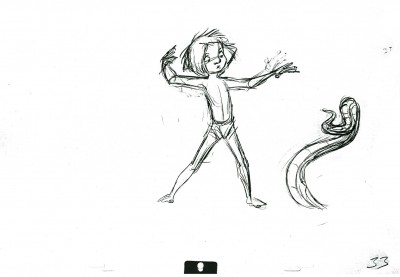 33
33(Click any image to enlarge.)
The Following QT movie is of the complete scene.
I love how he shakes his head and mouths the word “No”
just prior to wrenching his hand from Kaa’s grip.
Click left side of the black bar to play.
Right side to watch single frame.
Animation &Animation Artifacts &Disney 02 Jan 2010 09:09 am
Lady and the Tramp poses
- These are drawings were published in rather small sizes in the Frank Thomas/Ollie Johnston book, The Illusion of Life. I have photos which are somewhat larger and felt that it’s worth calling some attention to them. There’s so much charm in every one of them. Frank Thomas animated the scene.
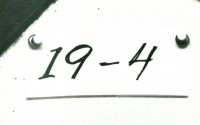
(Click any image you’d like to see larger.)
Now lets take a look at frame grabs from the sequence. (I followed the drawings above and eliminated some scenes – mostly of the two restauranteers playing music.
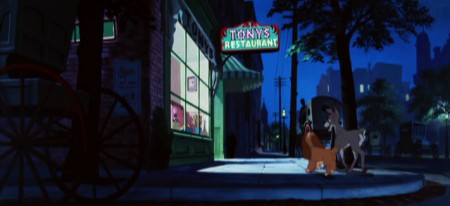 1
1
Commentary &Disney 30 Dec 2009 08:49 am
Another look at 2 features
- I’ve seen a couple of this year’s features another time this past week and have had some more thoughts about them.
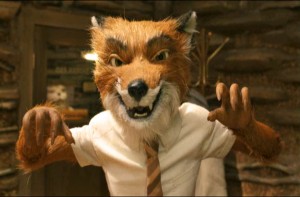 I’ve now seen The Fantastic Mr. Fox a third time. Twice in theaters and once on DVD. All three times it was every bit as entertaining for me as it was on the first viewing. I was more impressed with the levels of depth cleverly written within the film.
I’ve now seen The Fantastic Mr. Fox a third time. Twice in theaters and once on DVD. All three times it was every bit as entertaining for me as it was on the first viewing. I was more impressed with the levels of depth cleverly written within the film.
There are the same father/son complications of every Wes Anderson film, however more interesting to me was the thought on the nature of the film’s creatures.
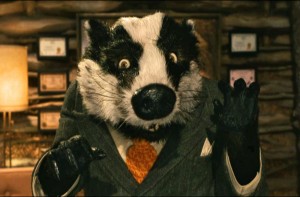 The Royal Tenanbaums treat each other as if they are Royal. The Foxes are wild animals; they know it and allow their true nature to emerge. Look at every time they eat, attacking wildly and voraciously.
The Royal Tenanbaums treat each other as if they are Royal. The Foxes are wild animals; they know it and allow their true nature to emerge. Look at every time they eat, attacking wildly and voraciously.
The animals in costume are little more than their natural selves: a fox is a fox and it’s unable to resist its natural, wild tendencies. A badger is a badger and tempers will rise when mixing with a fox. Though he’s a friend and lawyer to the fox, the two spit and spat whenever they meet.
This is not the same lax world as many past cartoon creations. Bugs Bunny was rarely, if ever, a bunny. He was more a foil for Elmer Fudd (or in some cases Daffy Duck, who started life as a duck but became something other.) Mickey Mouse could mix with Donald Duck, or Goofy, and all could just act as humans do with little regard for their off-sized proportions or animal natures. (Admittedly, Pluto always stayed a dog despite the fact that Goofy was also a dog, and Mickey Mouse was his owner and larger than the dog.)
This is the cartoon world, and there’s nothing wrong with it. It’s just that Mr. Fox takes it into a different direction – thanks to the spirit of Raold Dahl, which Wes Anderson followed closely. And in doing that Anderson asks what is our true nature? What is wild within us when we, as adults, seem to have learned to temper those base instincts.
The animation of some of the Beatrix Potter stories have followed the animal natures of the characters, but adaptations of The Wind in the Willows have not followed the book’s logic. In the book the animals ARE pointedly animals – despite wearing clothes and acting more human-like.
To me, the film is witty, charming and wholly satisfying. Even the stodgy, stiff animation is part of the appeal. There’s a quaint and homespun feeling to the characters in this old-time, hand-made animation. Sitting next to me in the theater, this last time, was a mother (about 30) with her son (about 10). She was quiet during the film, he was certainly enjoying it. When the film ended, the boy asked his mother excitedly, “Didn’t you just love the farmer?” The mother hesitated for a long time, then said, “I guess so.” She seemed not to enjoy the film while her son gushed over it all the way out of the theater. Not all films are for everyone.
The Princess and the Frog I saw for a second time on DVD. Actually, I could only make it through about 2/3 of the film on the second viewing. Its flaws were larger for me on the small screen and at second viewing.
The largest hurdle for me on the first viewing was the story, and it remained the complete shambles it was the second time out. It’s an embarrassment to me that this film came out of the Disney studio with no one noticing how poor the story and the storytelling is.
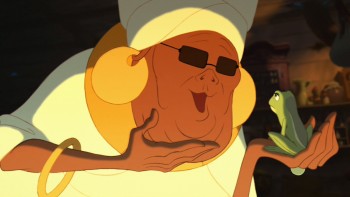 The only joy was in seeing animation so rich – not always good but always rich and professional. It’s been a while since we’ve had even that.
The only joy was in seeing animation so rich – not always good but always rich and professional. It’s been a while since we’ve had even that.
The movement and character development, in this film, was often more Warner Bros than Disney – wilder, broader and hard-edged. The last few Disney 2D features seemed to be making a split. Half the animation seemed very Don Bluth while the other half was more WB. This, of course, was just my perception. Only a couple of animators seemed distinctly out of the Disney mold – Andreas Deja and Glen Keane, for two.
I like Andreas Deja‘s animation of the voodoo queen, Mama Odie, introduced to us in the last third of the film. (Really! Was there no way to introduce this character earlier in the film?! I can think of half a dozen ways to do it, and the film could have used more of her.) Unfortunately, she’s on the screen too short a time to separate her from Mad Madam Mim or The Rescuers’ Madame Medusa.
It’s interesting that the film includes the death of a bug (a bug also introduced in the last third of the film), and that’s supposed to make us feel something. Of course, it becomes a star (there must be lots of stars – meaning dead bugs – that we don’t see up there) as the directors try pointlessly to pull the heartstrings. More disheartening than heartfelt.
In Mr. Fox, when the villainous rat dies, no such poor attempt is made to manipulate our emotions. Anderson didn’t sentimentalize the death. “Just another dead rat in the garbage pail behind the Chinese restaurant.”
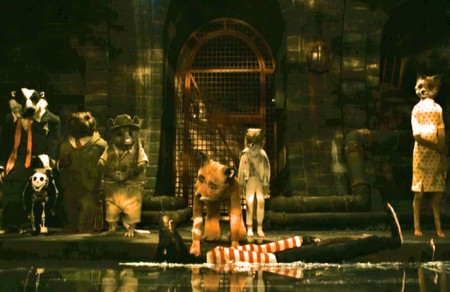
Articles on Animation &Disney &Illustration 29 Dec 2009 08:38 am
Canemaker’s J.P. Miller – 1
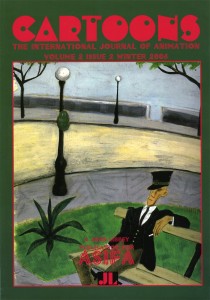 - John Canemaker contributed a two part article on J.P. Miller to Cartoons, the International Journal of Animation published by ASIFA Int’l. The two part article appeared in the Winter 2006 and Spring 2007 issues.
- John Canemaker contributed a two part article on J.P. Miller to Cartoons, the International Journal of Animation published by ASIFA Int’l. The two part article appeared in the Winter 2006 and Spring 2007 issues.
John Parr Miller was a designer who worked at the Disney studio from 1934 to 1942 as part of Joe Grant’s elite Character Model Department. After his service in WWII, he became a children’s book designer and author remaining in that field for the remainder of his life.
J.P. Miller’s career at Disney’s is not something we often hear about, and I think the information in John’s extended article is so valuable that it has to get out there even further and be shared more openly. Consequently, with John’s permission, I’m posting both parts.
This is part 1:
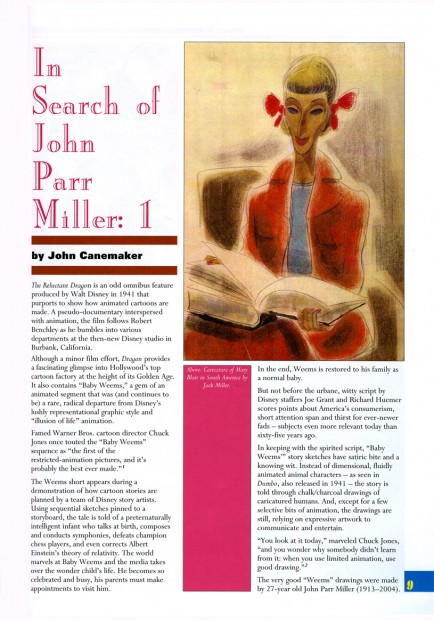 1
1(Click any image to enlarge.)
Animation &Animation Artifacts &Disney 28 Dec 2009 08:33 am
More Thomas Jungle Book
- Months ago, I posted a scene Frank Thomas animated for The Jungle Book. The scene involved the boy, Mowgli, and Kaa, the snake.
Here is another, companion scene with the same two characters. (It comes in the film with only a closeup of Kaa separating the two.)
There are 103 drawings to the scene, so I can’t possibly get them all into the one post. Consequently, I’ll try to do it in three.
Once again, many thanks go to John Canemaker for sharing these on line.
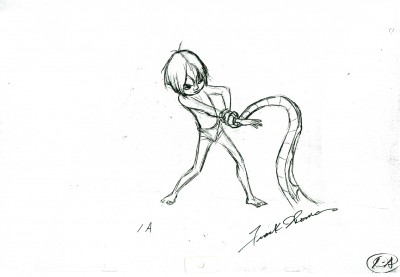 1a
1a(Click any image to enlarge.)
The Following QT movie is of the complete scene.
I love how he shakes his head and mouths the word “No”
just prior to wrenching his hand from Kaa’s grip.
Right side to watch single frame.
Bill Peckmann &Disney &Layout & Design &Rowland B. Wilson &Story & Storyboards 21 Dec 2009 09:02 am
Rowland B. Wilson’s Li’l Mermaid
- The brilliantly talented Rowland B Wilson, certainly paid his dues at a number of animation studios. We’ve seen his work with Richard Williams’ Soho Square studio and with Don Bluth’s Ireland studio.
Today, I have some sketches and designs he did for Walt Disney studio while working on The Little Mermaid. Not all of this material made it to the film, but the incredible wealth it brought the directors had to have affected the overall production. This invaluable material comes courtesy of Bill Peckmann.
The first group to view are Production Designs that he did for various sequences throughout the film.
The following are character designs Wilson did for The Little Mermaid for a character that never made it into the movie. Though, I think “Ink the Squid” may have developed into “Sebastian the Crab”.
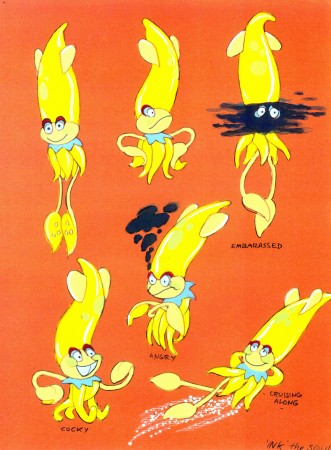
Then there are some of the creatures seen above land at the Glaciar Tray which apparently was designed to be part of the film.
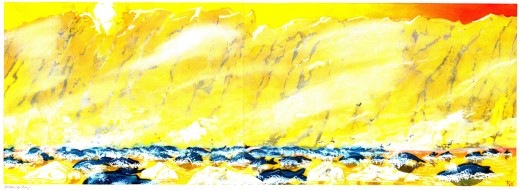
Then there is this short seqeunce of interaction between two fish:
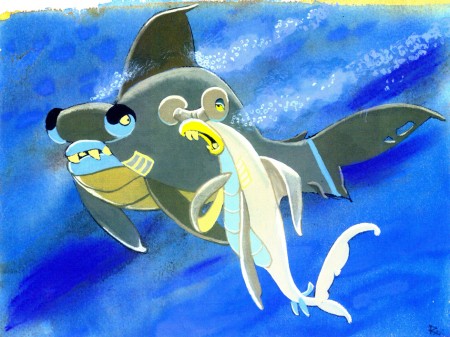
All art displayed © Walt Disney Prods.
This material is a treasure. I want to thank Bill Peckmann for sharing it with us.
Rowland B. Wilson was an artist of the highest standard, and I can’t get enough of his work. True inspiration.
Animation &Animation Artifacts &Bill Peckmann &Disney &Models 15 Dec 2009 08:47 am
Mickey the Tailor
Bill Peckmann recently sent me another stash of model sheets, especially of Mickey, Donald and Goofy. Among them were four pages of Mickey from The Brave Little Tailor. This film, of course, is a gem, and I can’t help but admire the drawing on these model sheets.
Two of them are clippings from animation by Fred Moore. There are some clues as to the exposing of the scene, so I took the drawings apart and ran them through AfterEffects just for my own entertainment. Here are the results, below. First all four model sheets; then the QT movie I made of the actions.
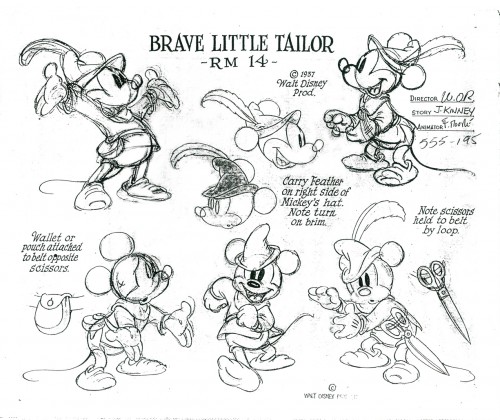 1
1(Click any image to enlarge.)
Mickey the Tailor
Click left side of the black bar to play.Right side to watch single frame.
Animation &Animation Artifacts &Disney 07 Dec 2009 08:43 am
Dwarf walk
- Here are the drawings of Grumpy walking in a huff. Bill Tytla was the animator. The images come from a photostat which prepared the material for publication. A couple of these drawings appeared in the Thomas-Johnston book, Illusion of Life. The sequence, here, is missing drawing numbers 6,7 and 8.)
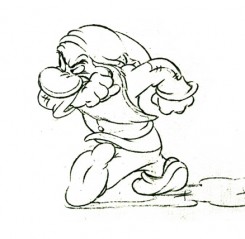 1
1 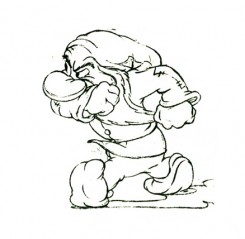 2
2Note how he starts with his shoulders high.
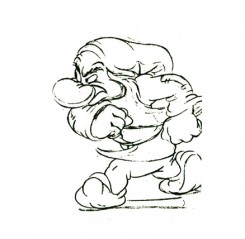 3
3 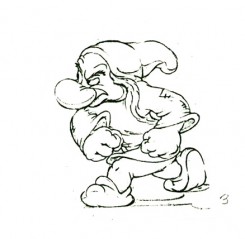 4
4
His bent leg, at this point, takes the weight of his body.
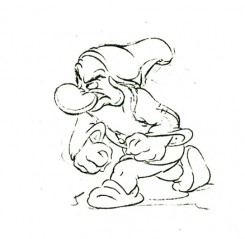 5
5 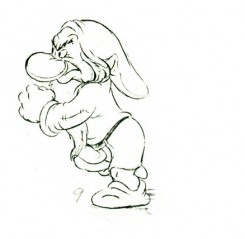 9
9
He moves his body up, high . . .
(Note that we’re missing drawings 6, 7, and 8.)
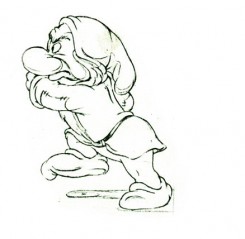 12
12 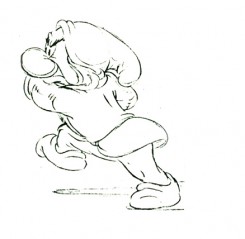 13
13
. . . then twists his entire torso.
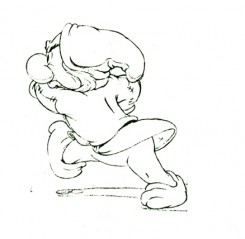 14
14 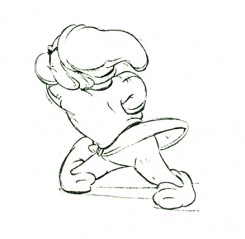 15
15
The straightened leg makes contact.
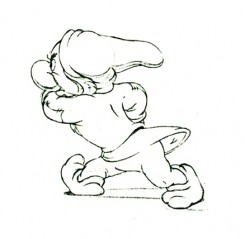 16
16 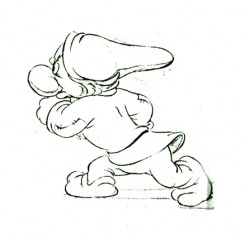 17
17
Again the shoulders go high as the pattern repeats on the other leg.
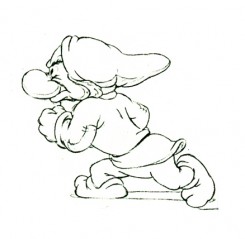 18
18 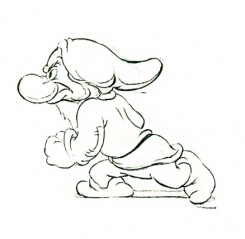 19
19
Note the detailed attention to the flow of the clothing throughout.
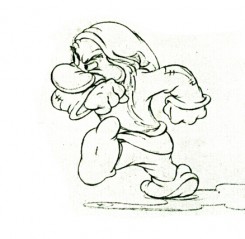 28
28
(Click any of the above images to enlarge.)
The following QT movie is on one’s with
the exception of dwngs #5, 9, & 11 on twos
to make up for the three missing drawings.
Right side to watch single frame.
Animation &Animation Artifacts &Disney 19 Oct 2009 07:37 am
Frank Thomas’ Jungle Book 3
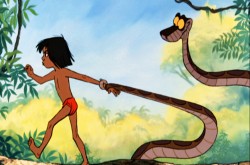 - This is the last of three posts showcasing the drawings of Frank Thomas for one scene of Mowgli and Kaa in The Jungle Book.
- This is the last of three posts showcasing the drawings of Frank Thomas for one scene of Mowgli and Kaa in The Jungle Book.
Frank was a very productive animator who was very defensive of his drawing ability, yet he always seemed to come up with something attractive and full of his gentle personality.
There is some nice use of foreshortening in the leg of Mowgli in these drawings. You have to be particularly good at drawing to make it work; I think I’ve seen too many bad drawings where it’s called attention to itself. Foreshortening is usually something worth avoiding unless you feel really confident about it. However, as done by Frank, it really helps the motion.
Again there is a smart use of ones and twos, and there seems to be no effort in having moved back and forth between the two. Yet, when you look at the movement, it seems natural.
The scene also ends in the middle of an action, something an editor might do, but it seems to be controlled by the animator here.
The entire scene is now up in all of the QT’s posted.
Part 1
Part 2
We start with the last drawing from Part 2.
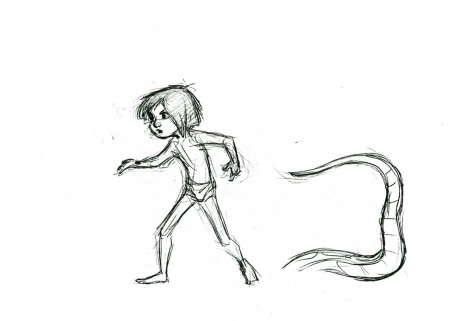 51
51(Click any image to enlarge to full animation sheet size.)
The QT movie below includes Parta 1, 2 &3 of this scene.
Mowgli & KaaClick left side of the black bar to play.
Right side to watch single frame.
Many thanks to John Canemaker for sharing these drawings with us.
